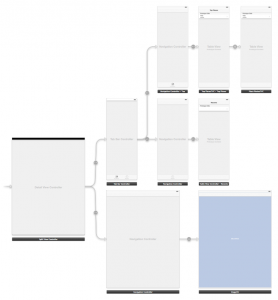Please note, this blog entry is from a previous course. You might want to check out the current one.
Lecture #14 starts with a follow up of the previous demo explaining parts of the code which had been posted differently.
The demo of this lecture continues with core data and pop overs.
The end of the lecture builds an introduction to core location including – new for iOS 7 – region-based monitoring and beacons.
The code for this lecture is available at gitub as well as from Stanford
The lecture as well as its slides are available via iTunes called “14. UIApplication, Network Activity Indicator, and Maps”.
